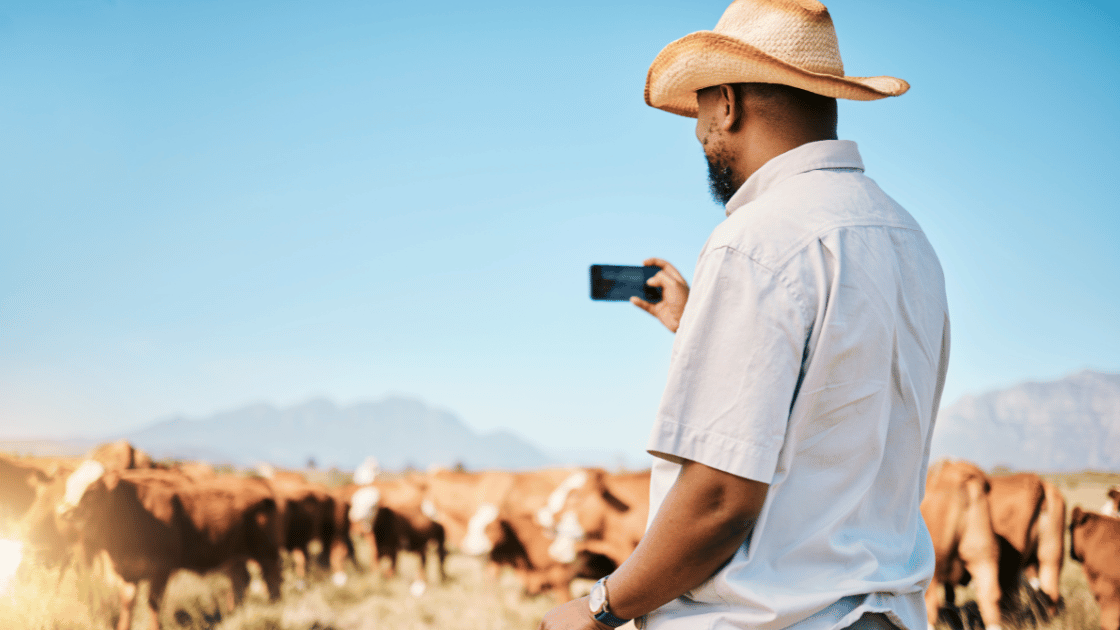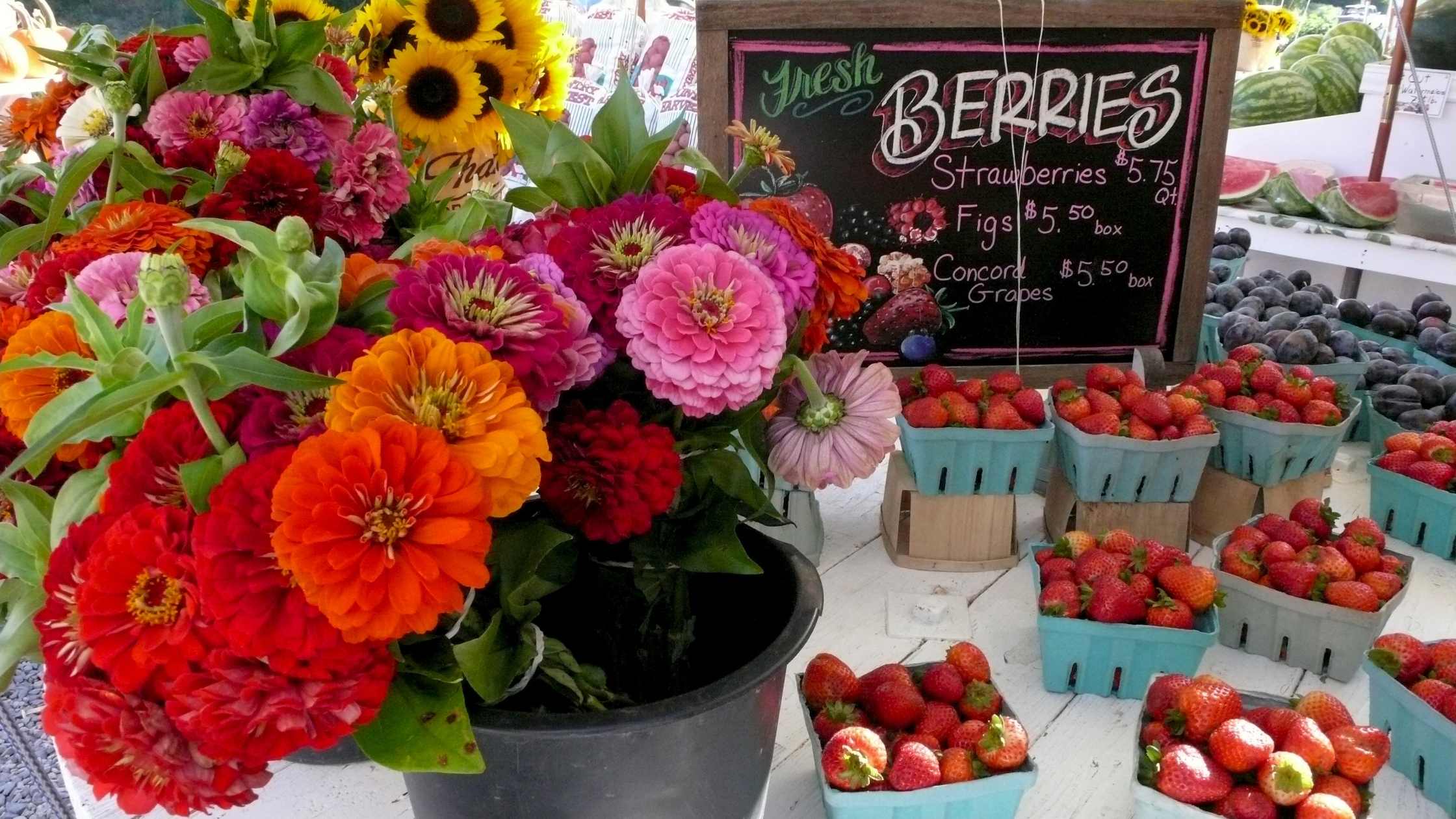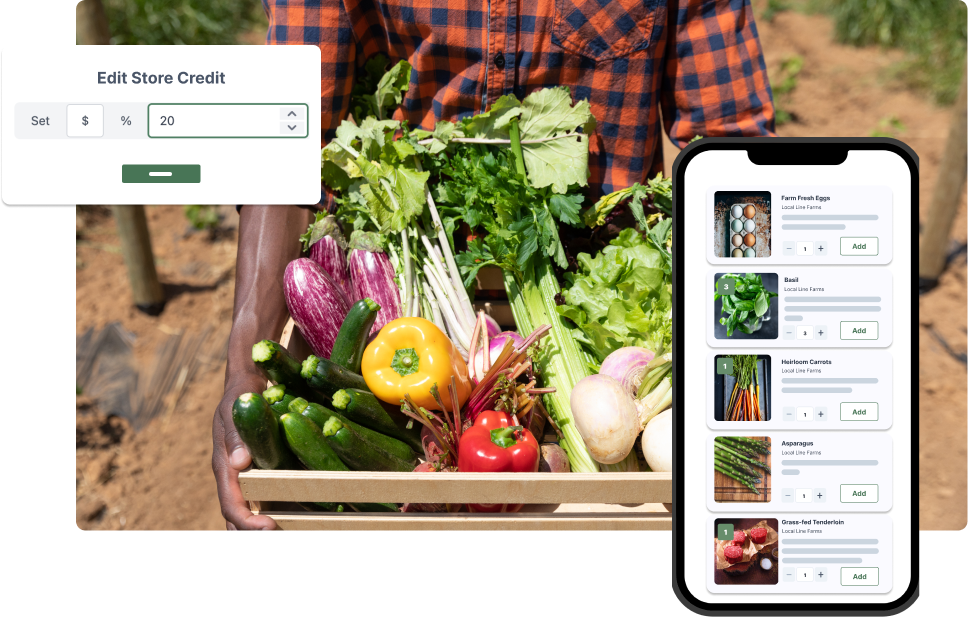How to Drive Customers to Your Online Farm Store
The biggest hurdle many farmers face when starting with online sales is converting their "offline"...

Your farm website is your digital storefront. Think about your website as a store or restaurant. If the outside of your restaurant is dirty, old, and not that appealing, it's going to affect how many customers you get, regardless of how good the food is. This applies to a website. You want a fresh, fast, clean website that creates a good first impression with visitors. It can often be the reason why (or why they don’t) buy from you.
Once you’ve secured your domain name, you should register your business with Google. Do you know when you search for something on Google, a sidebar appears with contact information and website details?
If you register your business, you will appear here when someone searches your farm name or other relevant local search terms (such as “best local farms near me”). By registering a business profile, you can provide up-to-date information about your business, such as address and opening hours, manage and share customer reviews, and ultimately, be found more easily on Google!
Three keys to success for farms using Google Business Profiles are:
If you’ve never heard of SEO, it’s about time you did. In simple terms, search engine optimization (SEO) is how your website gets ranked on a search engine, such as Google or Bing. Search engines look for different elements in your website that make it more or less trustworthy and the best match for what is being searched for. For example, if someone searched “regenerative farm San Diego,” the search engine would crawl the internet to find the best options.
In short, SEO helps you get discovered online, which helps get more eyes on your website, and (hopefully) more sales in the long run. To make the process a bit easier, we’ve compiled a list of essential steps to get you started with SEO for your farm website.
For a full list of SEO best practices, download our SEO checklist here.
What are keywords? When a search engine like Google crawls or scans your website, it will surface your site in someone’s search results based on the best match between your site and the person’s search terms.
Define which keywords you’re going to use. You can do this by thinking about a few core keywords (e.g. “food”, “produce”, “beef”) and then start adding modifiers to create search terms (e.g. adding “local” to “food” to create “local food”, or “local beef”). Keep a list of these. You can search for keywords using a keyword tool, such as Google Keyword Planner, SEMrush, Ahrefs, Answer the Public, and UberSuggest.
Be sure to use your keywords! Start by incorporating the phrases you are targeting into three main places: your page titles, body content, and meta descriptions.
The meta description is the short blurb that appears under a Google search. It gives the searcher a bit more information about your web page. Each page you add to your website should have a unique meta description, which should be between 50 and 160 characters. Be sure to use the keywords you defined above.
In addition to your domain name, which should be your business name, you want to create URL slugs that are relevant to what people are searching for. A URL slug is the short line of text that comes after the main URL. For example, if the URL is site.localline.ca/farm-resources, the /farm-resources is the slug. So if people are looking to buy your product, the slug should be /buy or /shop.
Get mentioned in the news? Listed on a market website or directory? Be sure to get them to hyperlink to your website. This helps build credibility and search engines recognize this as your site having more authority, which in turn will help your site rank higher in search results.
Your website should be visually appealing and succinct. Think about a really bad website you’ve seen. What made it bad? It was probably a lot of text, no images, mixed colors, fonts, etc. Now think about a really good website. What made it good? Most likely it had really clear branding. They used the same set of fonts and colors, great high-quality images, and a modern logo.
You want your website to be really good, and to achieve that, you need a clear brand.
It is a set of components that, when someone sees them together, they immediately know it’s your business. Defining and building your brand can be a substantial task. There are a few design tools, such as Canva, that allow you to build your own logo and graphics. Additionally, you could consider using our professional logo and brand services for farms to help create your brand.
Your website is a sales tool, and you want it to sell for you. Learning how to write product descriptions and optimizing the copy you use on your website is VERY important! It should entice someone in, convey what you are selling, and tell your business story.
Storytelling can be a powerful tool. There are two main storytelling structures:
Hello and welcome to Merlin’s Meadow! A family farm in Cambridge, Ontario, we love growing great local fruit and vegetables for you and your family. We know it can be tough finding local, organic, ethically sourced produce through large grocery stores. That’s why we created our online store! Shop this year’s crop of peas, peppers, salad greens, and tomatoes from the comfort of your home now and know where your food comes from!
Shop local food from the comfort of your home! Here at Merlin’s Meadow, we grow organic, pesticide-free fruits and vegetables for your family. With multiple delivery options to choose from, we offer customizable orders of all sizes. This year we’re growing salad greens, peas, peppers, and 4 varieties of heirloom tomatoes.
Shop now and experience the joy of local food!
We know building a website for your farm can be a daunting task. Beyond just having a beautiful website with images, colors, and fonts – you have to ensure your website is searchable and ranks well on Google. This can be a lot to do yourself, especially if you’re on a time crunch or a budget.
At Local Line, we offer affordable custom-built websites for your farm and an affordable farm website builder!
Getting a professional, easy-to-use website launched is a necessity for today's growing farms! We know it can be time-consuming, so we're here to take care of it for you. We offer two affordable website build packages. In each package, we offer a dedicated number of pages such as the Home page, About Us, and Shop pages, admin access so you can change anything whenever you want to, and a few rounds of website edits. In addition, we also help with copywriting, image selection, SEO, and branding.
Nina Galle is the co-author of Ready Farmer One. She continues to arm farmers with the tools, knowledge, and community they need to sell online at Local Line.

Stay in the loop by subscribing to our newsletter and receive weekly insights that you won't want to miss.

The biggest hurdle many farmers face when starting with online sales is converting their "offline"...
 Nina Galle
Nina Galle

Getting your farm noticed on the vast expanse of the internet is crucial. That's why we're here to...
 Nina Galle
Nina Galle

Local Line is excited to launch our new store credit feature! This feature allows customers to pay...
 Nina Galle
Nina Galle